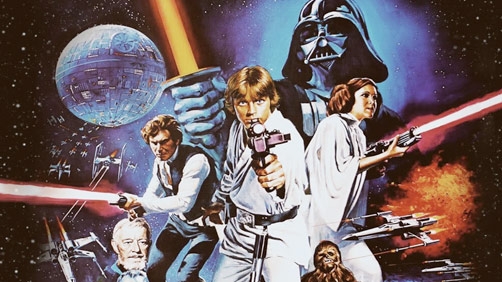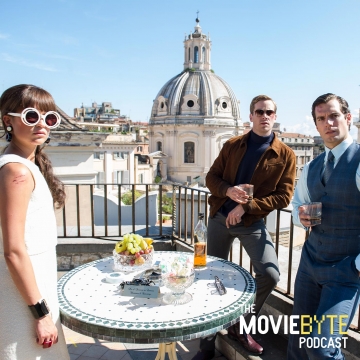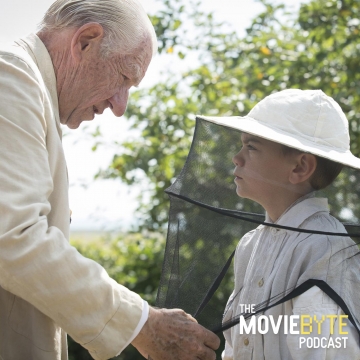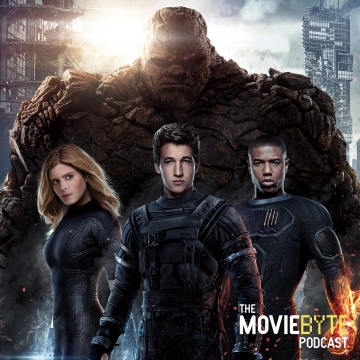
In keeping with the theme of Favorite Fun Futon Films for February (FFFFfF), we are reviewing classics — old and new — that ring true for us. These are carefully selected from the grand archives of film, and we wish to respectfully grace them with our reviews as fans.
We could write about any number of favorite films for home viewing, but a month isn’t long enough to hit more than a handful. We are focusing on the ones we have time to address thoroughly at the risk of appearing like nutty fans for these films. But, hey, if you aren’t nutty about something, then you have never lived!
So let’s get nutty, and let the emotion of FFFFfF wash over us.
Why Star Wars?
Remember when you were a child? Did you read bedtime stories? I remember reading lots of them, and many of them started with, “Once upon a time.” What would follow would be some grand adventure on a farm, or a sentimental look at a little girl and her giant red dog.
Movies are bedtime stories for adults, and Star Wars has become my favorite. From the very beginning of the film “A long time ago in a galaxy far, far away…” to the glorious Star Wars music fanfare that resounds during the end credits, it is just an epic bedtime story.
Star Wars is a tale of new hope that we can always return to. It’s timeless nature overcomes the weaknesses of its substandard blockbuster production budget. Its everything from the grand adventure on the farm to the little girl with her giant dog wrapped together into one. It doesn’t matter if its “pop culture” or grandiose to a fault. It has stood the test of time. It’s a fantasy I want to relive many a time before I lay me down to my final sleep.
My Lifetime and Star Wars
The first time I saw Star Wars, at the start of the film when the title appeared with that orchestral bampff!, my heart was in my throat. I was just biting down on a piece of pepperoni pizza that lodged there for almost the whole time the text was crawling.1 I was 12 years old.

I had tried to watch the films before, but they were long and difficult to follow, and no one seemed to care that I watch them. Everyone made a big deal about them, but I didn’t see what was so special about Star Wars. I couldn’t follow the concerns of the Rebels. I thought the bad guys were impossible to relate to. Boy, did I understand little of the ways of The Force.2
But the nineties had done a number on me. TV was all about showy, stylized visuals. Cartoons were about the sensational — never substance. Star Wars films looked like arthouse films in comparison to the entertainment trends of the 90s. I know that Star Wars is the grandfather of pop culture, but I didn’t understand that as a child.
Don’t be sorry for me. I’m glad that in my immaturity I hadn’t experienced the joy of the original Star Wars. When I was 12, I saw all the movies with my older brother at home while Mom and Dad were gone on date nights. That spring, the Star Wars Special Edition theatrical releases were announced, and it was all the more timely to journey into the galaxy far, far away. I realized then in my adolescence what I had been missing, and the original trilogy became my life-long favorite sci-fi adventure in a heartbeat. I imagined I was Luke Skywalker’s long-lost younger brother.
And I think because I didn’t come to appreciate Star Wars until I was in adolescence that I had a fonder experience with the films than many children do. In spite of the fantastic visual effects, lightsaber duels, and swashbuckling heroics of space smugglers, the original Star Wars trilogy is more art and less pop than many give it credit for.
Both art and pop culture can give audiences joy, but it’s art that speaks to the human soul so effectively that it gives you goosebumps and chills that run up and down your spine. Art produces these surreal effects. The original Star Wars trilogy has always given me this sort of ecstatic sensation. Thus, Star Wars is a mythic film for the age. Yes, Star Wars is a landmark film that should be considered artistic.
And it all started with the original film, later to be known as Episode IV - A New Hope.
It is a period of civil war…

Star Wars Episode IV: A New Hope, originally released as Star Wars, is a 1977 American epic space opera film written and directed by George Lucas. It is the first film released in the Star Wars film series and is the fourth installment in terms of the series’ internal chronology.
Groundbreaking in its use of special effects, unconventional editing, and sci-fi/fantasy narrative, the original Star Wars is one of the most successful and influential films of all time.
The movie follows a group of freedom fighters known as the Rebel Alliance as they plot to destroy the powerful Death Star space station, a devastating weapon created by the Galactic Empire. This conflict disrupts the isolated life of farmboy Luke Skywalker when he inadvertently acquires the droids carrying the stolen plans to the Death Star. After the Empire begins a cruel and destructive search for the droids, Skywalker decides to accompany Jedi Knight Obi-Wan Kenobi on a daring mission to rescue the owner of the droids, Princess Leia, and save the Rebel Alliance.
Produced with a budget of $11 million and released on May 25, 1977, the film earned $460 million (to the present day) domestically and $314 million overseas, surpassing Jaws as the nominal highest grossing film, and remained that way until being surpassed by E.T. the Extra Terrestrial in 1982. When adjusted for inflation, it is the second highest grossing film in North America and is the third highest grossing in the world as of 2012.
Among the many awards the film received, it gained 10 Academy Award nominations, winning six; the nominations included “Best Supporting Actor” for Alec Guinness and “Best Picture.” The film is often ranked among the best films of all time.3
Lucas has re-released the film on several occasions, sometimes with significant changes; the most notable versions are the original 1977 (duh), the 1997 “Special Edition,” the 2004 DVD release, and the 2011 Blu-ray release. Beyond the original, all have modified visual effects, altered dialogue, and added scenes.4
This will be a film long remembered
One of the enriching qualities of the whole film is what it does for the audience’s imagination. It encourages you to see things that were not there, and to expand on the story in your own imagination. It’s with the effectiveness of what it shows it makes this galaxy seem all the more real to us.
Luke’s growth as a character
Skywalker experiences an incredible amount of change as a young man in an admirable way while confronting the evils of the Galactic Empire first hand. Not only is his home and the only family he ever knew destroyed, but the only person that ever truly understood him, Obi-Wan Kenobi, is slain right in front of him. So much for the mentorship… that is, until Luke starts hearing voices. Awesome.
The ingenious sound effects
Beyond just creative, these sounds feel as though they truly represent their visuals to new viewers. It’s R-2’s beeps and bloops that speak volumes about his personality. It’s the whizz-ing of Luke’s landspeeder that tells us it’s a cheep/used jalopy in spite of its sportiness. It’s the all-time crowning achievements of Vader’s breathing, lasar blasters firing, and lightsabers whoohlvvv-ing that give this film the honor of “Best Sound Effects for All Time Achievement Award” as far as I’m concerned.
Two red suns loom on the horizon
Did it ever occur to you that you’ve never seen anything like that before or since? While Luke is watching the sun set, and the soundtrack plays Obi-Wan’s “Force Theme” in the background, it’s one of the most iconic moments of film history. But let’s be fair: it’s the two suns that deserve the credit for making it abundantly clear that the film is more creative than most sci-fis ever hope to be.
The Obi-Wan/Force/Skywalker Soundtrack Theme
On this week’s podcast discussion, Linsay Morgan got to one of my favorite traits of this film before I could. While Luke watches the two setting suns go down over Tatooine, a very inspiring piece of music (that goes by many names) plays to a roaring crescendo. It’s to the good guys of Star Wars what the Imperial March is to the bad guys. I love this musical number and never grow tired of it. But it’s the moment of the setting suns in A New Hope that plays it for us at its best. I savor that moment.

Vader Force chokes an arogant imperial supremacist
Remember the dude, General Motti (played by Richard LeParmentier), that dared to cross Vader during an officers’ meeting aboard the Death Star? If it were not for Governor Tarkin (played by Peter Cushing), who gets queezy watching Force chokes, the general would’ve died that day.5 This is the first time in the film we see The Force at work, and it so happens to be The Dark Side that strikes first. The scene thoroughly convinces me that Vader uses some invisible energy to do sadistic things. In that fleeting moment, I am convinced in the power of The Force. Think about that. In an instant, audiences believe in this mystical stuff. Your are converted to the religion for the rest of the viewing. That’s some powerful cinema storytelling.
The effectiveness of not showing some things
Remember the horrors your imagination cooked up when you watched Vader visit Princess Leia with a torture droid on the detention level of the Death Star? How about when Luke and Obi-Wan find the sandcrawler in shambles and the countless dead jawas scattered about after stormtroopers attack? Remember hearing Obi-Wan’s voice echo in Luke’s head for the first time after Obi-Wan’s cut down by Vader? Did you see the people on Alderan just before the planet was shot to bits by the Death Star? These scenes and others in the film play out nicely because you don’t watch Leia get tortured, and you don’t see Obi-Wan as a blue ghost the moment he’s killed. The film very effectively knows when to let your imagination picture what happened so it wouldn’t look cheesy attempting extremely ambitious points of the story.
Most quotable of Star Wars films
True, “I would sooner kiss a wookie,” and a few other choice one-liners creep up in Episode V and VI, but the majority of the funny and cool lines are in Episode IV. Just take my word for it. “Uh, uh… negative, negative. We had a reactor leak here now. Give us a few minutes to lock it down. Large leak, very dangerous. … Boring conversation, anyway. Luke, we’re gonna have company!”
The magnitude of the Death Star
I’ve never seen an approach to a space station (or space vessel of any kind) as gut-wrenching as that when the Millennium Falcon is caught in the tractor beam and is sucked into the belly of “That’s no moon. It’s a space station.” The Death Star proves the impressiveness of the Galactic Empire, and the real threat they have on the galaxy at large. It totally validates the military defense/offense operations of the Rebel Alliance. And there is no greater joy than witnessing the Death Star nuke itself from the inside out.
There is more that the fanboy in me wishes to praise, but my sensibilities are telling me not to go completely nut-zoid. There are so many rich visuals, witty lines, heartfelt expositions… is it any wonder America loves Star Wars?
What George “Should” have “Specialized”
It annoys most everyone that Han shot first but doesn’t by Lucas’ standards today. Lucas tampered with the film more than 20 years after its original release, changing several elements unique to the stories’ representation.
What I want to know is why didn’t Lucas change/improve some of the special effects that are dated by modern standards. When he made Star Wars, he couldn’t infuse it with all the glitzy computer tech whiz-bang whimsy. When he went back and “improved” the film with changes, some of the changes were fixed with CG animation, but not all was consistently improved with the magical ILM touch.
So rather than Han shooting second — and the other similar changes that annoy the majority of fans — why couldn’t these issues of the cheap looking effects be changed?
Luke’s binoculars
The visual in the binoculars is as low-tech as all get out. It looks like VHS tape playback with noise and streaks from dirty video recordings. This is nothing futuristic or advanced in tech. It’s backwards in comparison to the prequels’ tech for sure.

The blue hologram transmission
Anything that produces a blue hologram of Leia looks so inferior to a non-3D image one has to wonder why R-2 didn’t just video record Leia, then project a traditional 2D image of her video on the wall. The blue holograms are shoddy. ILM should’ve worked their magic in the special editions to repair this.
Blood spilt from a lightsaber
Obi-Wan cuts the arm off the wolf-man in the Tatooine cantina after threats on Luke’s life. The severed arm makes a bloody mess all over the floor. Everyone knows that this is the only time a lightsaber made such a gory mess in all the Star Wars films. Hereafter, the cuts cauterize the wounds they inflict — no dripping blood. So why didn’t Lucas fix this in a special edition? I wanna know.
The lightsabers flicker
Lightsabers in this film were produced with very meager visual effects hackery. The imagination tells you they are oh-so impressive, but they by no means compare well to the lightsabers of the other Star Wars films. They look as though the lightsabers are shorting out.6 They strobe so badly. And when they are about to turn on or off, everything on screen goes still for a split second while the props are switched out in the actors’ hands with the bladed saber hilts. They are very dated compared to the blades of the prequels.
The Death Star Technical Readouts
While the Rebel’s on the moon of Yavin discuss a plan of attack on the Death Star, they bring out the video monitors and show off some sexy graphic animations of the space station and how they will fly through the trench to the exhaust port (where they will shove some proton torpedoes in). The whole animated schematic is some of the worst of blockbuster films ever. Though it is inconsequential, why is it the low tech is all they have? The Rebels’ other tech — even the beat-up X Wing fighters — put the computer animation to shame.
So, why remake scenes that influence what we love about Star Wars? Why couldn’t Lucas have sweat the small stuff? I guess we will never know the answer.
Questions I Have
It occured to me while I watched this film in preparation for my review that I still have other questions that have gone unanswered about this film. None of them have serious consequence to my like or dislike of A New Hope, but I find it curious that with all the Star Wars expanded universe and making-of material I’ve come across, these questions have not been answered:
- What are R-2 D-2’s eyes?
- Why does Uncle Owen’s outfit look so much like the Jedi’s?
- Is it reasonable to believe the Death Star travels at light speed? Why does it always orbit planets when it’s not at light speed?
- Why didn’t Emporer Palpatine kill Darth Vader when he failed to stop Luke from destroying the Death Star? Sith are known for their quick tempers, and a lot was riding on the Death Star for evil imperial dominination.
- Why does Luke’s lightsaber blade look white in color most of the time it’s on? Obi-Wan’s was obviously blue. Why wasn’t Luke’s as it is in the next movie?

Fanboys ask such questions. At the end of the day, these unresolved issues are trivial and don’t reflect on my rating of the film. So little about this film is “bad” all things considered. Most of its shortcomings are due to the budget limitations the film faced during production, and most of the budget limitations I think the film overcomes with the engaging story and characters.
The Force is strong with this one
Some people kid themselves by nit-picking apart the shortcomings of A New Hope. All sane people love it, right? It was George Lucas’ best moment: when he created an extravagant universe of sci-fi wonders and invented a whole new market for epic Hollywood blockbusters. Rotten Tomatoes’ summation says it to a tee:
[Star War is] a legendarily expansive and ambitious start to the sci-fi saga, George Lucas opened our eyes to the possiblites of blockbuster filmmaking and things have never been the same.
More importantly than what A New Hope did for filmmaking is the movie itself. The film is an epic that has influenced our hearts and minds for the better. We better understand our world through the tapestry of fantastic worlds, characters, struggles and battles that Star Wars parodies from real life. This film is one of finest examples of fantasy evoking the spiritual dimension — stuff that goes unseen — in the real world.
Star Wars tugs on the heart strings. For the fleeting two hours of entertainment it charms us into believing in the Force. It entreats us to understand that good should and shall overcome immense odds; the lowest of creatures are bound to be the instruments of justice.
And when the message is powerfully communicated, it doesn’t matter how fantastic (or absurd) some of the aliens, robots, and battle stations are. Where there is an abundance of creativity applied to a dynamic story relating the simplest of moral heroics, we will all become fanboys to some extent.
Who hasn’t wanted to believe when Obi-Wan told Luke, “The Force will be with you always,” that he was speaking to them personally? So, yes, The Force is very strong with this one.
No one says it better than Darth: “The ability to destroy a planet is insignificant next to the power of The Force.”
It’s the only pizza on record that I can remember enjoying to the nth degree. Its flavor is seared into my memory. It’s the pizza that all other pizza is compared to, because it was like eating pizza for the first time — all thanks to Star Wars orchestral bampff!.↩
Video games were much more interesting to me then than movies.↩
Believe it or not, George Lucas was nominated for “Best Director.” Most people today find very little to praise about Lucas’ director skills. You can see all the stuff about the 1977 Star Wars and the Academy Awards here.↩
I will spend very little time addressing the different natures of the different versions. For all intense and purposes, let me speak to the version that is your own personal favorite. That’s what I’m trying to cover.↩
Rather, the officer died when the Death Star went kah-BLU-ee! a few days later.↩
Ever see the Energizer Bunny commercial?↩


